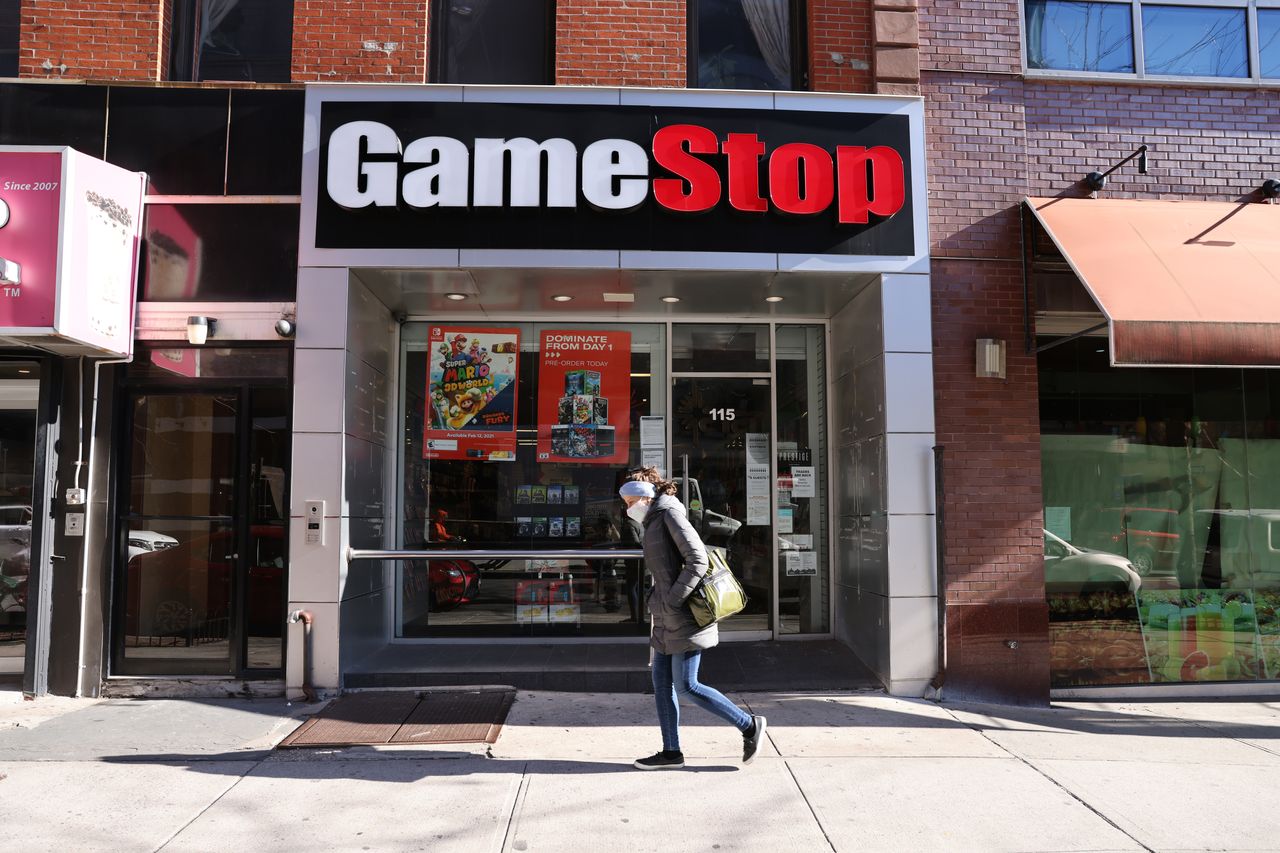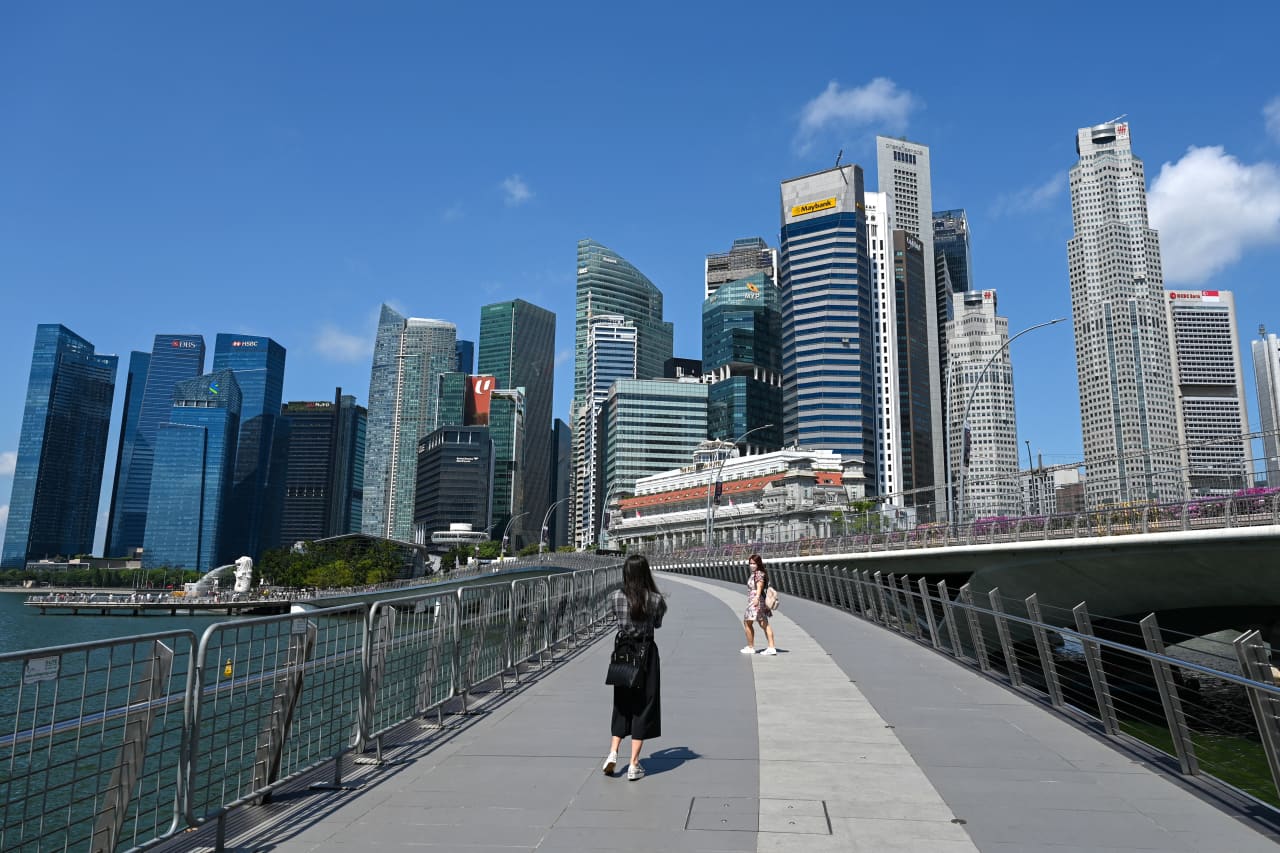GameStop Plans 4-For-1 Split
The meme stock saga continues.
GameStop’s stock split is finally happening.
The company announced plans to split its stock four-for-one later this month, sending shares higher after the market closed on Wednesday. Shareholders of record at the close of business on July 18 will receive three additional shares for every share owned via a stock dividend. The additional shares will be distributed on July 21, and GameStop (ticker: GME) stock will begin trading on a split-adjusted basis on July 22.
GameStop stockholders in June voted in favour of expanding the company’s share authorisation to one billion from 300 million in order to facilitate a split. The company said in March that the higher authorisation would allow it to implement a split and “provide flexibility for future corporate needs.”
Shares of GameStop rose 5% to US$123.25 in after-hours trading even though stock splits don’t make a company more valuable, given that they are akin to cutting a pie into smaller slices. If GameStop split at its recent after-hours levels, it would trade at $30.81.
That is around the US$30 pre-split price target Wedbush analyst Michael Pachter assigns the stock, which he rates at Underperform. “Makes it more affordable for unsuspecting rubes who haven’t yet lost all of their money,” Pachter told Barron’s via email when asked about the split.
The stock has traded as high as $255.69 in the past 12 months, but it is still up significantly from its 2020 levels. Even the potential post-split number is well above where GameStop shares were trading before Chewy co-founder Ryan Cohen announced a stake and launched a campaign that kicked off the company’s meme-fueled run in January 2021. GameStop stock has fallen 20% in 2022, compared with a 19% drop for the S&P 500 index.
Cohen became the chairman of GameStop’s board a year ago. The company has added executives and employees with technology, e-commerce, and blockchain backgrounds to help turn things around as the business battles the shift to sales of videogames online rather than in stores.
Following the board and management shake-up, the company invested in fulfilment and customer-care efforts, as well as expanding its offerings to include more computer supplies and TVs. It is also launching a marketplace for nonfungible tokens. Experts, like Pachter, are sceptical such blockchain efforts will benefit the stock.
Reprinted by permission of Barron’s. Copyright 2021 Dow Jones & Company. Inc. All Rights Reserved Worldwide. Original date of publication: July 7, 2022.
 Copyright 2020, Dow Jones & Company, Inc. All Rights Reserved Worldwide. LEARN MORE
Copyright 2020, Dow Jones & Company, Inc. All Rights Reserved Worldwide. LEARN MORE
This stylish family home combines a classic palette and finishes with a flexible floorplan
Just 55 minutes from Sydney, make this your creative getaway located in the majestic Hawkesbury region.
More than one fifth of Australians are cutting back on the number of people they socialise with
Australian social circles are shrinking as more people look for ways to keep a lid on spending, a new survey has found.
New research from Finder found more than one fifth of respondents had dropped a friend or reduced their social circle because they were unable to afford the same levels of social activity. The survey questioned 1,041 people about how increasing concerns about affordability were affecting their social lives. The results showed 6 percent had cut ties with a friend, 16 percent were going out with fewer people and 26 percent were going to fewer events.
Expensive events such as hens’ parties and weddings were among the activities people were looking to avoid, indicating younger people were those most feeling the brunt of cost of living pressures. According to Canstar, the average cost of a wedding in NSW was between $37,108 to $41,245 and marginally lower in Victoria at $36, 358 to $37,430.
But not all age groups are curbing their social circle. While the survey found that 10 percent of Gen Z respondents had cut off a friend, only 2 percent of Baby Boomers had done similar.
Money expert at Finder, Rebecca Pike, said many had no choice but to prioritise necessities like bills over discretionary activities.
“Unfortunately, for some, social activities have become a luxury they can no longer afford,” she said.
This stylish family home combines a classic palette and finishes with a flexible floorplan
Just 55 minutes from Sydney, make this your creative getaway located in the majestic Hawkesbury region.






















